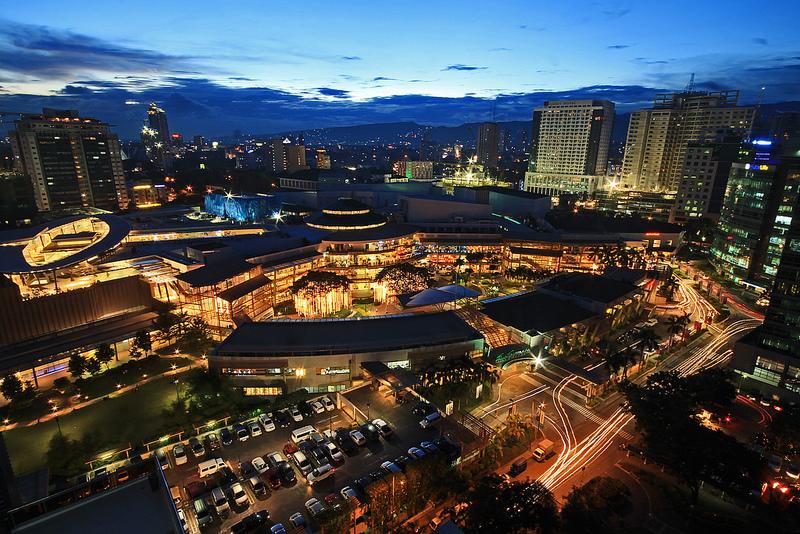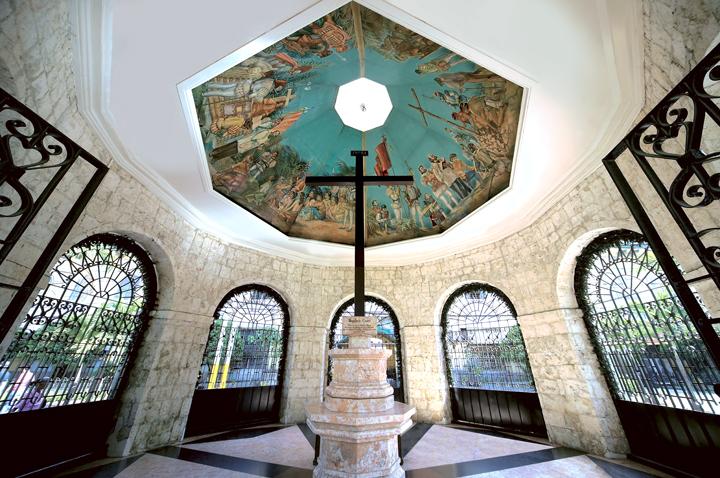
The province of Cebu plays a major role in the Philippine history. In April 1521, Spaniards landed on the shores of Mactan Island and fought with Lapu-lapu’s army. The event became known as the “Battle of Mactan” and it is where the Portuguese explorer Ferdinand Magellan died.
A few years after, on August 6, 1569, Miguel Lopez de Legazpi was appointed as governor of Cebu province by King Philip II after the inception of the first Spanish settlement in Cebu City. This occurrence became the basis for Cebu’s foundation day. (Cebu Taoist Temple)
(Cebu Taoist Temple)
The Republic Act 7698 of 1994 declares every August 6 of the year as a special non-working holiday in Cebu for the celebration of the province’s foundation day. In the year 2000, Republic Act 8953 was enacted to expand the holiday’s coverage to the province’s component and highly-urbanized cities.
The province has three highly urbanized cities (Cebu City, Mandaue City and Lapu-Lapu City), 6 component cities and 44 municipalities that are divided into 6 legislative districts excluding highly urbanized cities (HUCs). Separately, Lapu-Lapu has one legislative district and Cebu City has two legislative districts (North and South district).
Situated in the Central Visayas region, Cebu had a population of 2, 619, 362 in 2010 which makes it the most populous province in Visayas. The count does not include the population of its 3 HUCs: Cebu City (866, 171l Lapu-Lapu City (350, 467); and Mandaue City (331, 320). (Cebu Heritage Monument)
(Cebu Heritage Monument)
The current governor of the province is the son of former Supreme Court Chief Justice HIlario Davide Jr., Hilario Davide III. As the province of Cebu celebrated its 44th founding Anniversary last August 6, here are the ten (10) facts that you should know about Cebu:
10. Cebu once had its own railway system
Cebu had trains back in the day. Its main track stretches over 90 kilometers connecting the town of Argao and Danao. Unfortunately, the railway was heavily damaged during the Second World War and this lead for Cebuanos to find other means of transportation.
9. Fri-ji-der was actually a refrigerator’s brand
Wondering why most Cebuanos call refrigerators as frijider? The term actually came from a very popular brand of refrigerator in the United States during the early 20th century, the Frigidaire. It is the very first brand of self-contained refrigerator. The brand was so well known that it became a common household name for a refrigerator even in America.
8. Cebu’s first high-rise building had a revolving restaurant
Considered as first in Asia, Ludo & Luym Hotel Building had a revolving restaurant. The building was built in the early 1960s and also considered as the first high-rise building in Cebu City. The skyscraper also houses different business establishments: the Centrepoint Hotel, Sundowner Hotel, the GMA 7 Studio and Shoe Mart (SM) Store.
7. Ferdinand Magellan gave Cebu three gifts
The image of Sr. Santo Niño that was given to Queen Juana was not the only gift Magellan entrusted to the natives of Cebu. He also left two other important religious artifacts. The first one is the image of Virgin Mary and the Child Jesus and the second one is the Ecce Homo which he gave to King Humabon. (Magellan's Cross)
(Magellan's Cross)
6. Cebuanos are the first Filipinos
Upon the arrival of Ruy López de Villalobos, he named Cebu, Bohol, Leyte, Negros and Panay as “Las Islas Filipinas” making the inhabitants the very first Filipinos. The five islands were referred to as the Western Islands. Meanwhile, the name “Las Islas Filipinas” is in honor of Philip of Austria who later became King Philip II of Spain.
5. Cebu has the country's smallest and oldest fort
Fort San Pedro was the first fort that was built during the Spanish occupation. It was erected to fend off local attackers and it later served as a stronghold for Filipino revolutionaries in Cebu. It was also used as a barracks by the American forces during World War II. It became an army camp after the war.
4. The first Visayan who became a Philippine President hailed from Cebu
Sergio Osmeña, Sr was born in Cebu City and served as the fourth President of the Philippines from 1944 to 1946. He was Vice President under Manuel L. Quezon and succeeded as President after Quezon’s sudden death in 1944 becoming the oldest office holder at age 65.
3. There is a Malacañan Palace in Cebu
Situated in Cebu City, the Malacañan Palace was built in 1910. It is dubbed as the “Malacañang of the South” and was formerly known as the Aduana which is the Spanish word for customs. The building originally served as the main headquarters of the Bureau of Customs in the province.
2. Cebuanos had their own script
If the Tag-alogs had the Baybayin, Cebuanos also created and used their very own script. It is the Kudlit-kabadlit which is very similar to the Baybayin. The ancient Visayan script, just like the Baybayin is quite easy to use. You just need to memorize it and have a quick understanding of the elements use on the characters.
1. Cebu houses the oldest Christian relic in the Philippines
The image of the Holy Child of Jesus is the oldest catholic relic in the country. It was made by Flemish artisans in Europe. The relic was given to King Humabon and Queen Juana by Ferdinand Magellan as a gift for their baptism into the Roman Catholic Church in April 1521.
In honor of the image (called the Santo Niño de Cebu), the province holds the famous Sinulog Festival every third Sunday of January. The relic is can be seen at the Basilica Minore Del Santo Niño in Cebu City. (Cebu Metropolitan Cathedral)
(Cebu Metropolitan Cathedral)










